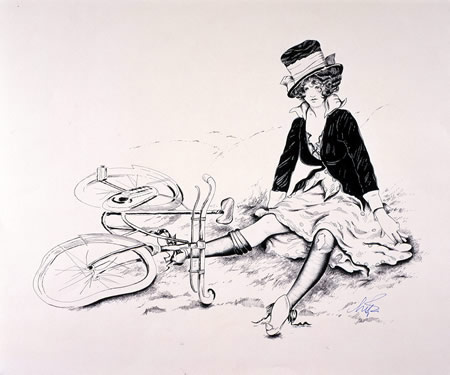How to handle a road bike crash
 I had a minor accident on my bike over the weekend and it made me think about how we should all know more about how to handle unexpected situations like bicycle crashes.
I had a minor accident on my bike over the weekend and it made me think about how we should all know more about how to handle unexpected situations like bicycle crashes.
I think it’s only fitting that I should share my own story first. The accident I had on Sunday was not the first time I’d fallen or crashed off my road bike but it’s certainly the hardest I’ve hit the ground.
I’ve been riding for nearly four years and in that time have had about six ‘crashes’, all of them at low speed, some were ‘unclipping incidents’ where I failed to get my foot unclipped from my pedal and others involved obstacles.
The one on the weekend involved another rider. In short we were riding side by side and I was going straight ahead (and thought she was too) and she was turning right from my left side (and thought I was turning right too). It wasn’t either of our faults but unfortunately I came crashing down. I hold the other rider in no way responsible. It was just a communication breakdown.
I fell to the left and landed heavily on my left knee but in the process also hit my right knee on the frame of my bike. It was quite painful at the time but thanks to some quick thinking by the first-aid trained Donna I was soon back on my bike. I did however head straight home (about 4 km) to put ice on my knee but I did ride there with my buddy Philippa to keep an eye on me.
So all I really did was graze and bruise my knees and dinted my pride a little as well.
Would you know what do if you crashed or if a person you were riding with crashed?
My own experience got me thinking that all bike riders should know a little bit about how to assess their fellow riders in the case of an accident.
I found this helpful article on Bicycling.com so thought I’d share some of it with you.
Clear the Road. If the fallen cyclist can walk, have her move away from traffic while you clear the bike and personal belongings off the road. If the victim can’t move or loses consciousness, block traffic—or ask others in the group to—and call an ambulance.
Ask Questions. “Can you see me okay? Can you follow my fingers? Are things blurry? Does it hurt if you take a deep breath? Do you feel short of breath? Do you have abdominal pain?” If the cyclist complains of a headache or blurred vision, or if anything seems atypical or out of place, immediate medical attention should be sought. Look in the injured person’s eyes and at their pupils and make sure they react. Make sure they can follow directions.
Check the Helmet. Whether the cyclist is on the ground or walking, always check for a head injury. If there is a crack in their helmet then you should consider calling an ambulance or at least advise them to see a doctor. If the rider’s helmet is cracked and is under 18 and in your care you should err on the side of caution and call an ambulance regardless.
And if they choose to ride home, like in my case, then make sure someone goes with them to ensure they arrive at their destination safely.
The best thing you can do in any emergency situation is remain calm and follow your gut instinct, and seek appropriate help as quickly as possible.
